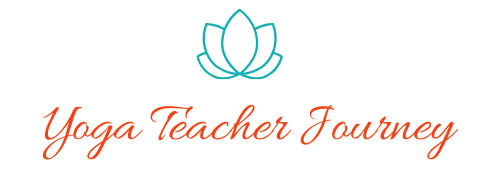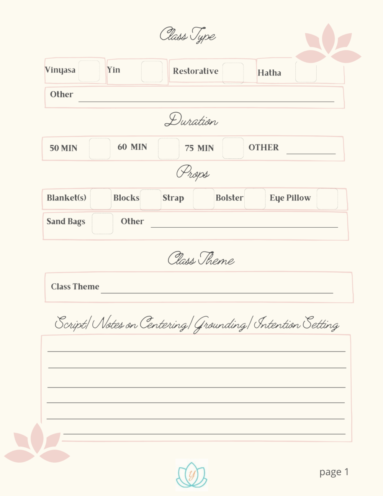There are so many tools available to us as yoga teachers to help facilitate bringing our students into a relaxed and present state. In a recent post, we discussed Pranayama (breath control) and the reasons we incorporate the 4th limb of yoga into our physical practice. Other useful tools for centering and grounding students include the use of themes, inspirational quotes, chants, mantras, affirmations, mudras, guided meditations, and visualizations.
Should we use ALL of these elements at once in our classes or choose which to use for each specific class? I’ll address this question and share some of my favorite guided meditations, visualizations, mantras, affirmations, and quotes later in this post.
Additional elements we provide in our asana class are jewels of enhancements and help deepen the student’s experience.
After a few years of teaching, I now feel that a class is lacking if it does not at least include some type of centering or theme during the class (see How to Theme a Yoga Class) in addition to Pranayama. Not including these elements is an unfortunate missed opportunity for the teacher. A missed opportunity to have connected with the students and to teach them to fully relax and find stillness. A missed opportunity to teach them to connect deeper to their true Self, and a missed opportunity to expand their knowledge of yoga!
In addition to Pranayama (a form of meditation by observing the breath), enhancements such as inspirational quotes, mantras, mudras, and guided meditations, allow students to release whatever they have been holding on to (tension, stress, negativity), and to be focused on what you are presenting to them in the moment. By incorporating these elements into class, you are teaching students about awareness, enabling them to quiet their mind, free themselves of the mind chatter (Chitta Vritti), find stillness and peace. This is the goal of yoga (Yoga Sutra 1:2 “The restraint of the modification of the mind-stuff is yoga”).
To be clear, this is not to say that Asana is not a form of meditation. It most surely is a moving meditation and necessary for our physical and mental health. But teaching students all the ways to practice the path of yoga is the ultimate objective.
The following Sanskrit saying referred to In the Yoga Sutras of Patanjali (translation by Sri Swami Satchidananda), “As the mind, so the person; bondage or liberation are in your own mind,” sums it up nicely. It is further explained that “things outside neither bind nor liberate you; only your attitude toward them does that.” If we can help to open students’ minds and hearts and to understand how to achieve the goal of yoga, I believe we’ve essentially done our job. Hopefully, they will leave their mat feeling a sense of peace and carry it with them on their journey, knowing we cannot change the outside world; what we can change is our inner world.
Too much or too little?
By now, I’m sure you’ve surmised that I believe in including themes and Pranayama in each and every class we teach. But can it be overload to include inspirational quotes, mantras and or affirmations, mudras and meditation in each class? The answer is no, it’s not overload – as long as each element correlates to the theme and time permits, it is perfectly fine to include as many enhancements as you deem appropriate.
If the Asana portion of the class still includes all of the elements required to make a complete sequence, then by all means embellish the class with the other jewels. There will be times your theme will be short, sweet, and to the point and times you may feel it needs additional enhancements. One that comes to mind is a theme on loving kindness and compassion. This theme lends itself to taking our time, using affirmations to reinforce self-love and perhaps ending with a gentle, guided meditation before Savasana.
Mudras
Mudras (seals or hand gestures) are another element that can be inserted at various places in our classes. I love to use mudras while students are seated during Pranayama. Mudras can help to ground students bringing them into a receptive state. Always explain what the mudra means and give a demonstration of how to position your hands. I love to use the Lotus mudra during Vrksasana (tree pose), sometimes starting with a closed Lotus and ending with the Open Lotus mudra. The Dhyana (meditation) mudra is another favorite to use during seated Pranayama. The Chin or Jnana mudras are most commonly used in classes seated but can also be used during standing postures such as Natarajasana (dancer pose).
Inspirational Quotes
Inspirational quotes can be great enhancements your theme. You can begin your theme with a quote (always crediting the author) and elaborate further with your own interpretation. You can end class with a quote as students begin to relax into Savasana or even at the very end of class when they come back into a seated posture. The quote holds substance as it relates and gives context to your theme. I use quotes frequently and they have provided a great source of inspiration for some of my themes (see my Themes and Sequences Workbook for theme inspiration, scripts and quotes).
Here are a few favorites:
“It’s not what you look at that matters; It’s what you see.” ~ Henry David Thoreau
“Everything that exists was once only imagined.” ~ Dr. Wayne Dyer
“People will forget what you said, people will forget what you did, but people will never forget how you made them feel.” ~ Maya Angelou
“Yoga uses the body to discipline the mind and reach the soul.” ~ B.K.S. Iyengar
“Life is a balance of holding on and letting go.” ~ Rumi
“Yoga is the journey of the self, through the self, to the self.” ~ Bhagavad Gita
Mantras and Affirmations
Mantra is a Sanskrit word meaning “a tool for the mind.” Mantras are said to be sacred sounds or words that are repeated to calm our minds and connect us to our higher Self. Examples of commonly used mantras are: So Hum (to mean “I am that” – or I am one with the Universe), and Om (the sound of the Universal vibration to represent the union of mind, body, and spirit as one with the Universe).
On the other hand, affirmations are positive statements used to assert positive beliefs about yourself. Positive affirmations can be used to counter limiting, negative beliefs as well. Examples of commonly used affirmations are:
“I choose happiness.”
“I am a vessel of love and compassion.”
“I am supported by family and friends.”
“I am strong and capable.”
“I trust my inner guidance.”
“I am at peace.”
In a yoga class, mantras and affirmations are presented to students to be repeated quietly to themselves. Both are forms of meditation designed to help keep our mind at ease and bring us into a deeper state of awareness. The Om chant may be used to close a class reverberating the syllables A, U, M, out loud. This is a beautiful way to bring the Sangha (community) together and to connect to the Universe as one. Click here to learn more about the meaning of the Om chant.

Guided Meditations
Meditation or Dhyana in Sanskrit, is the 7th limb of yoga as described in Patanjali’s Yoga Sutras. It is defined as the “uninterrupted flow of concentration” (Yoga Journal). A common misconception about all meditations is that the mind should be clear from thoughts. Generally, the practice of meditation is to cultivate awareness of the thoughts and to use an object (the breath, mantra, affirmation, etc.) as an anchor to keep your mind from wandering (monkey-brain).
The way I commonly prepare students for Savasana in each class is a form of a guided meditation. As I cue them to relax each specific part of their body, their mind follows, making it in essence a guided meditation.
There are other guided meditations that I use frequently in Savasana as well, such as the “White Light” meditation. Here guide students to imagine a white light begins at the crown of the head, and moves to the third eye, the nose, the chin, throat center, heart center, right shoulder, elbow, wrist, fingers, back to heart center, left shoulder, elbow, wrist, fingers, back to heart center, naval, right hip, knee, ankle, toes, back to naval, left hip, knee, ankle, toes, back to naval, heart center, throat center, third eye, and back out the crown of the head.
Click on the links below for more favorite guided meditations.
Kirtan Kriya – Sa Ta Na Ma Meditation
Nature Hike Meditation for the Senses
Kudos to you for taking the time to read this post and investigate the use of these additional jewels in your classes. The little extra time it takes to plan and execute a well-rounded yoga class will be more than appreciated by your students. They will leave your class feeling relaxed and fulfilled and wanting to return for more.





